To supply water to the city of Nimes (Nemausus), the Romans built an aqueduct from the springs of Fontaine d'Eure at Uzès. This monumental Roman engineering feat, begun by Agrippa in about 19 BC, was completed over a century later during Trajan's reign (AD 98-117). The aqueduct brought water 50 km from the springs of Fontaine d'Eure at Uzès to Nîmes down a total gradient of only 17 meters, to supply a maximum of some 44 million gallons daily to Nimes. When the water reached Nîmes, it was stored in a large holding tank called a castellum, from which it was piped to all parts of the city.
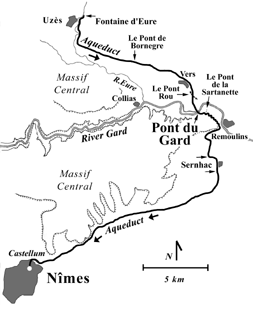
From the 4th C it ceased to be maintained and lime deposits built up until finally by the 9th C it had fallen into disuse.
The largest of several intact remaining sections of this aqueduct can be seen at Pont du Gard, 18 km NE of Nîmes. The structure was restored in 1743. A highway bridge has since been added to the structure alongside its base.
The famous three-tiered aqueduct-bridge spans 275 meters (300 yards) over the Gardon valley. It was built of limestone blocks weighing up to six tons each, fitted together without mortar and secured with iron clamps. Three tiers of arches rise to a height of 155 feet (47 m). The first tier is composed of 6 arches, from 51 to 80 feet (15 to 24 m) wide, the largest spanning the river; the second tier is composed of 11 arches of the same dimensions; the third, carrying the conduit, is composed of 35 smaller (15-foot) arches.
Our first view of the Pont du Gard was impressive.
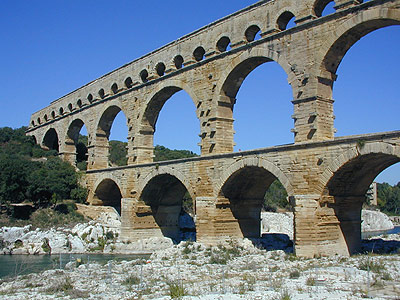
A closeup show the protruding stones which were used for the scaffolding in the original construction and left for maintenence.

This shot shows the highway bridge later built along the original aqueduct. It also gives some sense of size, compared with the people in the picture.
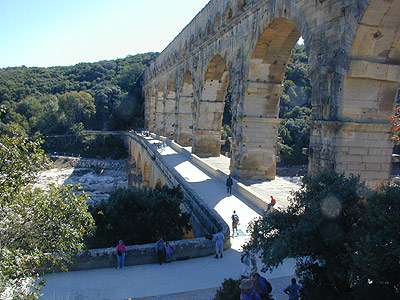
This is a view from a higher level.
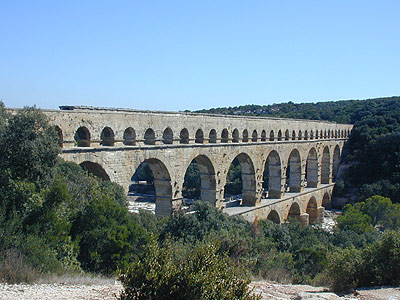
This is a view from the end of the aqueduct, where you can see a cross section of the top where the water flowed.
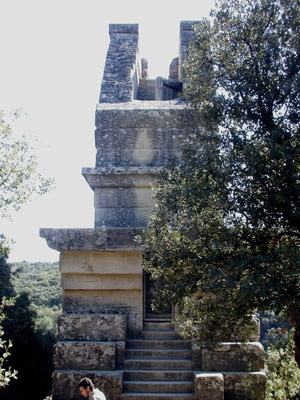
Here we are on the other side, almost at the water level.
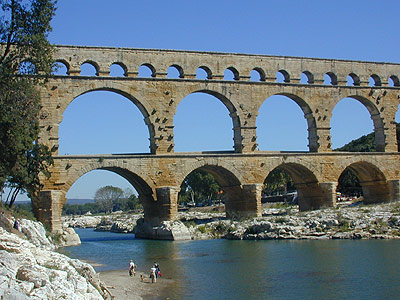
Here we are at the water level, looking directly at the largest arch.
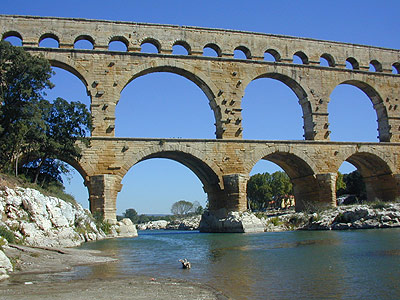
We had some time for lunch at the cafeteria and time to visit their excellent museum on the building of this great aqueduct.

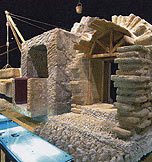

On y va to Roussillon.
